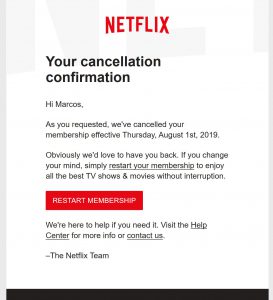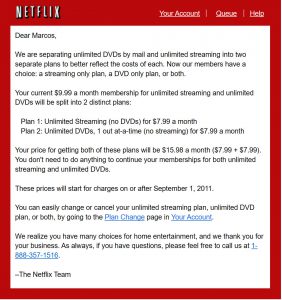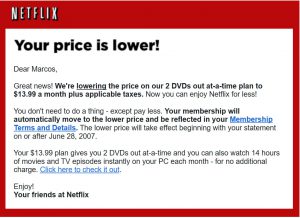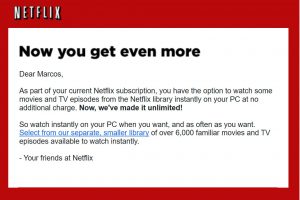After being a Netflix member for 21 years, I finally terminated the service in August 2019. Did I miss it? The answer is 10% YES and 90% NO.
At least, for me, the service is no longer a necessity, so eliminating it from the monthly household bill was an easy decision.
But what were the real reasons why I decided to terminate my Netflix subscription? For one, it was not really the cost. The last monthly bill was only for $15.99 (Premium Plan).
In the U.S., Netflix started in 1998 as a DVD-by-mail service. By late 2006, it began to offer a few movies to stream online but only through the use of PCs. When standalone media streaming devices like Roku, Apple TV and Fire TV proliferated, Netflix started its streaming-only subscriptions in 2010.

In 2011, Netflix split off its DVD-by-mail service (dvd.netflix.com) and streaming-only service (Netflix.com). While both units are still active and profitable (note: the DVD-by-mail service is available only in the U.S.), its streaming-only business had been the main driver of growth as it was able to offer this service on a global scale.

This leads again to the question: why did I terminate my Netflix (streaming-only) membership when it such a good deal?
Here are my answers:
#1. Amazon Prime. Yes, membership* ($119 plus tax a year or $10.90 a month, tax inclusive) with the world’s online superstore includes unlimited viewing of Prime Video movies. Their selection had been growing by leaps and bounds despite being a latecomer in the streaming-only business.
When I had both (Netflix & Amazon Prime), I watched more movies that were to my liking with Prime than Netflix. Moreover, most movies that are available on DVD sometimes don’t make it in the streaming-only format in Netflix — but I happen to find them in Amazon Prime.
And. if you love documentaries and other hard to find movies in the streaming-only format, nothing beats Amazon Prime.
#2. Free Streaming Sites (Ads supported or Totally-Free). During the last three (3) years alone, the apps, as well as Internet TV channels that are in my media streamers and Smart TVs, had grown to a gazillion. Although some of them had come and gone, in the U.S., apps like Tubi, Roku, Popcornflix, Pluto, FilmRise, IMDb (acquired by Amazon), YouTube plus tons of others had been offering both totally free or ad-supported movies and TV shows for the last few years now.
You can even have a totally-free (yes, no ads) streaming service by just being a member of your local library. In the U.S., this service is provided by Kanopy.
The apps or websites, as well as content-aggregators mentioned above, may not have the latest offerings or come only in SD (standard definition) format or that they may have viewing caps (like Kanopy, at fifteen (15) movies a month), the tons of choices from all of them are more than enough for the casual viewer.
#3. Your Internet Service Provider (ISP). Most ISPs in the U.S. today have their own streaming-only portal built-in to the service. They offer both free and paid streaming videos and some – like Comcast/Xfinity- will even give you a free media streamer of their own. Comcast/Xfinity just recently renamed their video streaming portal, Peacock.
Lastly, #4. Netflix itself. A lot of movies released on DVD don’t make to the streaming-only format with Netflix — which was the main reason I joined them in 1998. During their early days, they offered the best selection of movies on DVD from the comforts of your home with free shipping and no late fees.
Their concept was such a huge hit among movie buffs that it forced the big brick and mortar video rental firms like Hollywood Video and Blockbuster out of business.


To keep their streaming-only customers beholden to the service, they had resorted to producing their own films and TV shows. And released they did – all episodes of shows are all in one big bundle that you’ll bound to waste a lot of your precious time on this planet and led to the term, binge-watching.
After 21 years, I missed Netflix only by 10% because I might go back to their DVD-by-mail service only.
But, then again, times have changed. Today, for their $7.95 a month subscription (unlimited but only one (1) DVD rented out), I can have more than one (1) DVD — as my very own.
*NOTES: On February 18, 2022, Amazon Prime annual membership increased to $139 (plus tax) while the monthly membership went up to $14.99. In spite of the increase, I continued my Prime membership as, IMHO, the benefits still outweigh the cost.

